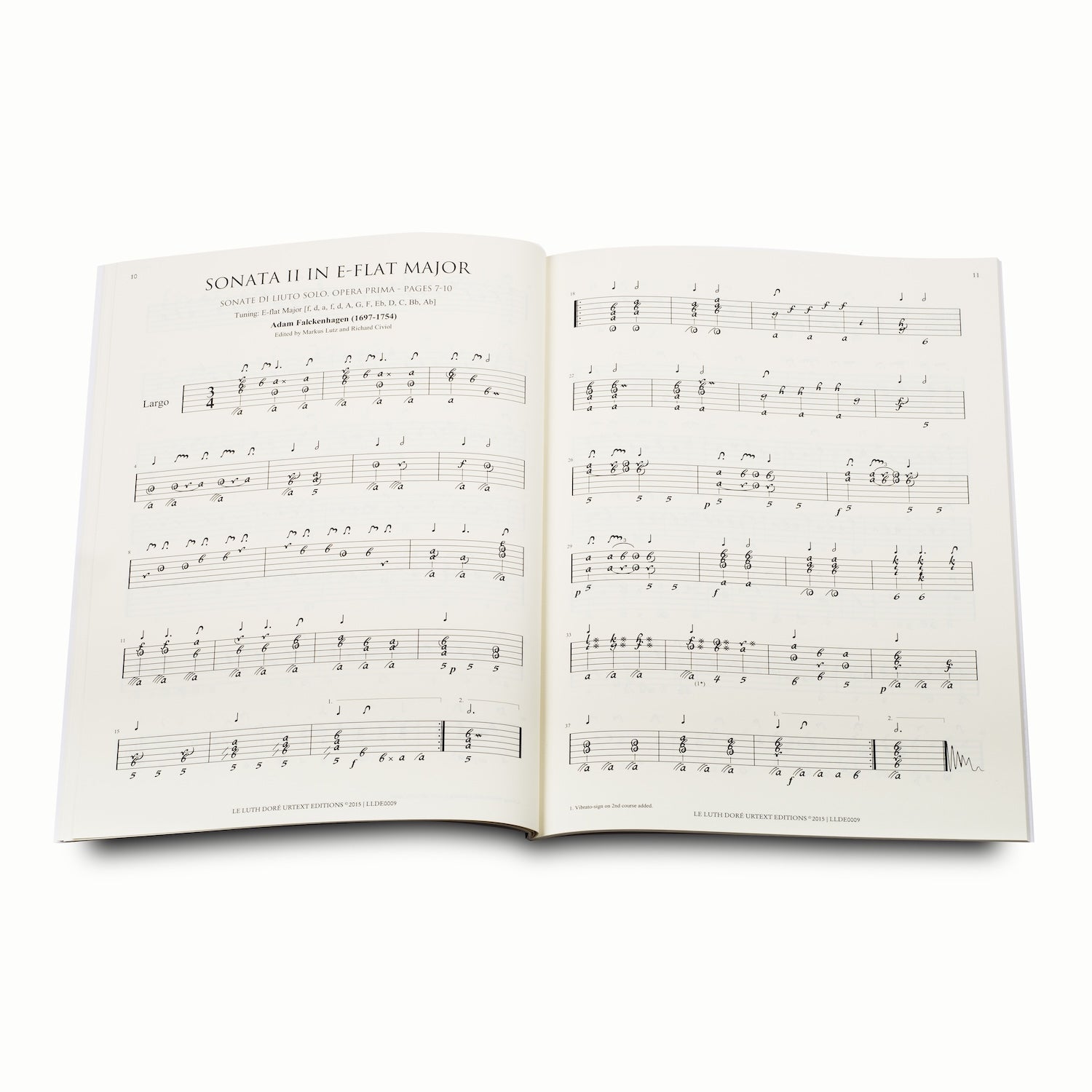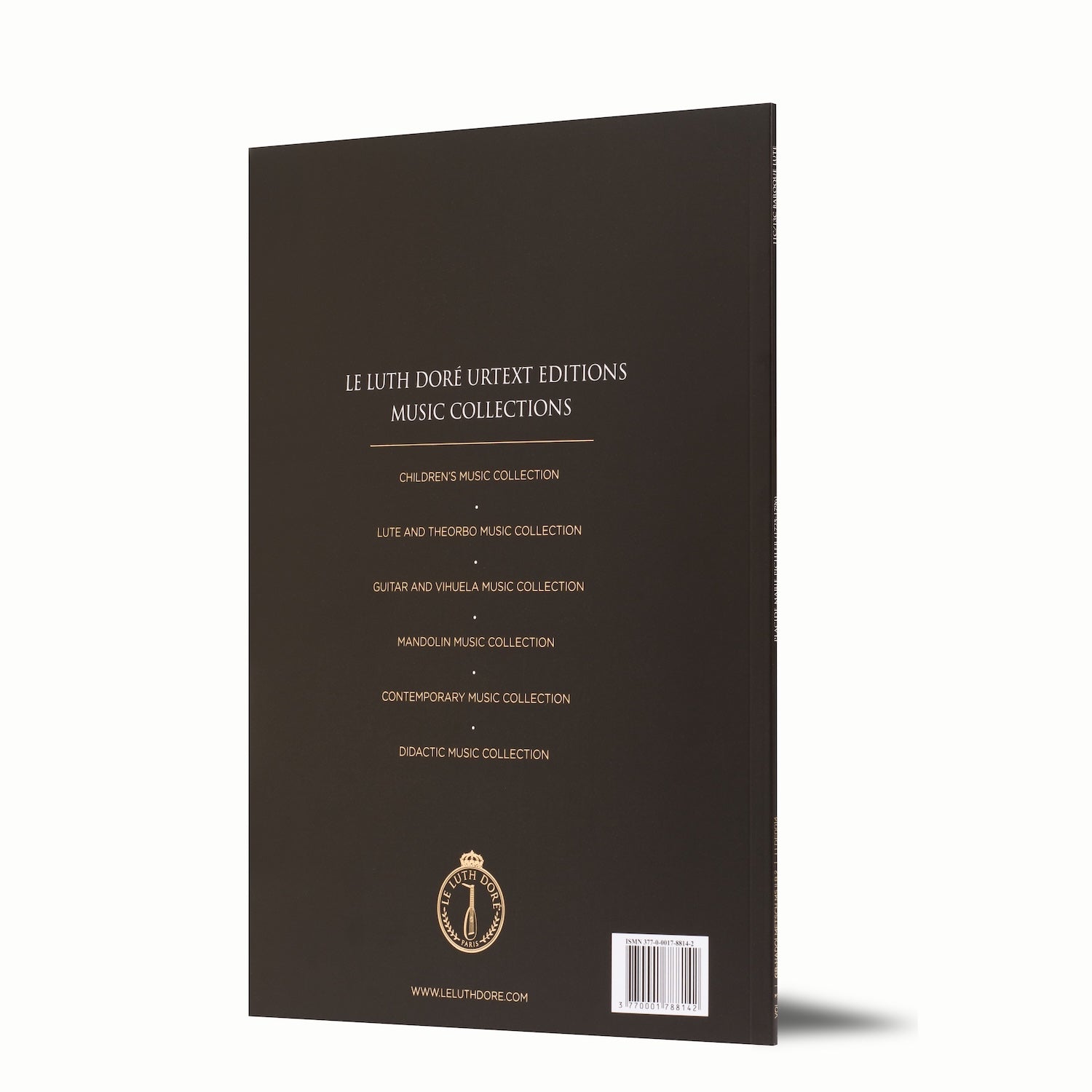My Store
Sonate di Liuto Solo, Opera Prima, Nürnberg 1736
Sonate di Liuto Solo, Opera Prima, Nürnberg 1736
SKU:LLDE0009
• Composer(s): Adam Falckenhagen (1697-1754)
• Title: Sonata di Liuto Solo
• Subtitle: Opera Prima, Nürnberg 1736
• First edition: Adam Falckenhagen, Nuremberg
• Year of publication: 1736
• Source: D-LEm III.10.22
• Scholarly edition based on original sources
• Faithful transcriptions with historical fingerings and optimal readability
• Ideal for performance, research, and advanced teaching
No VAT applied (Article 293 B of the French Tax Code).
Couldn't load pickup availability
Partager
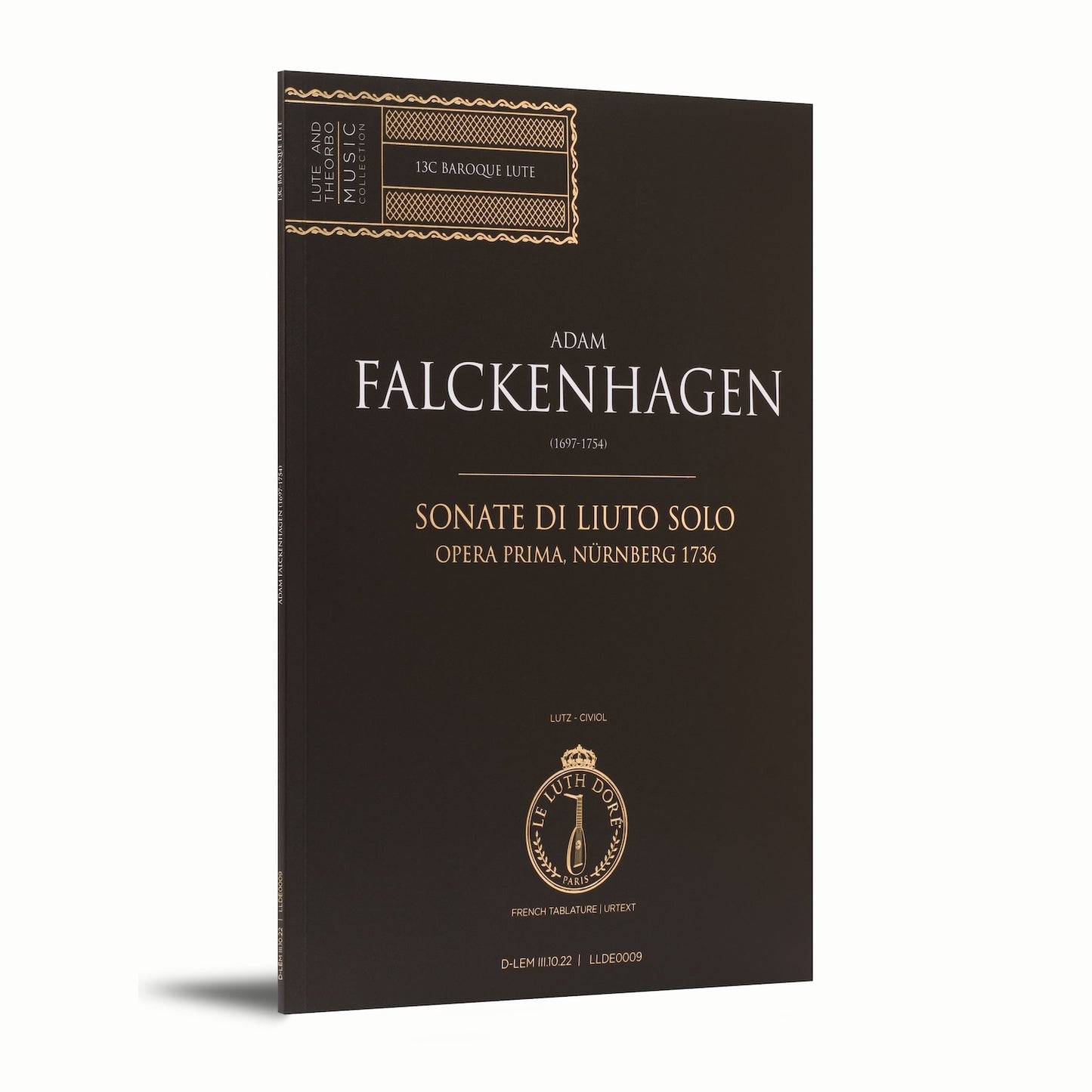
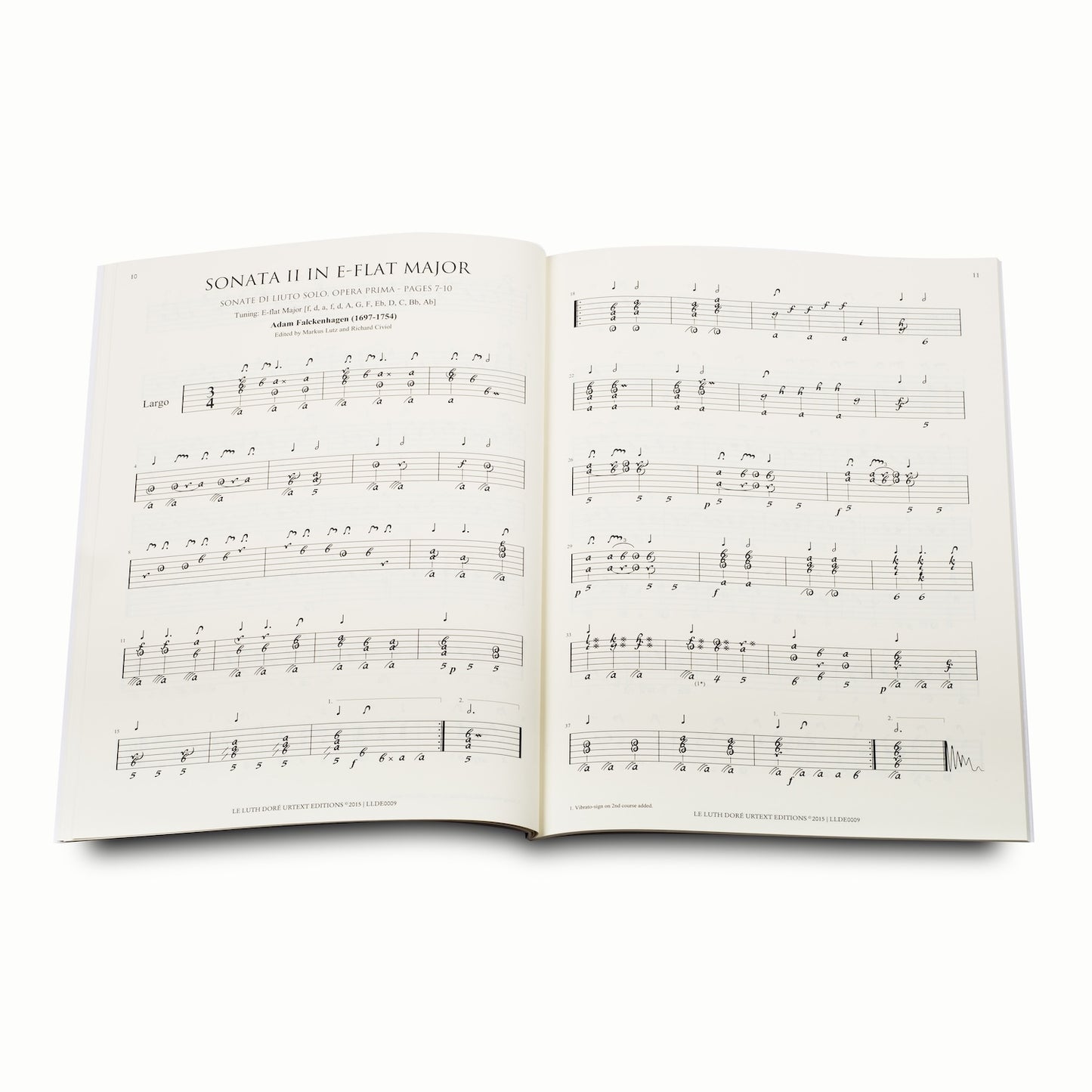
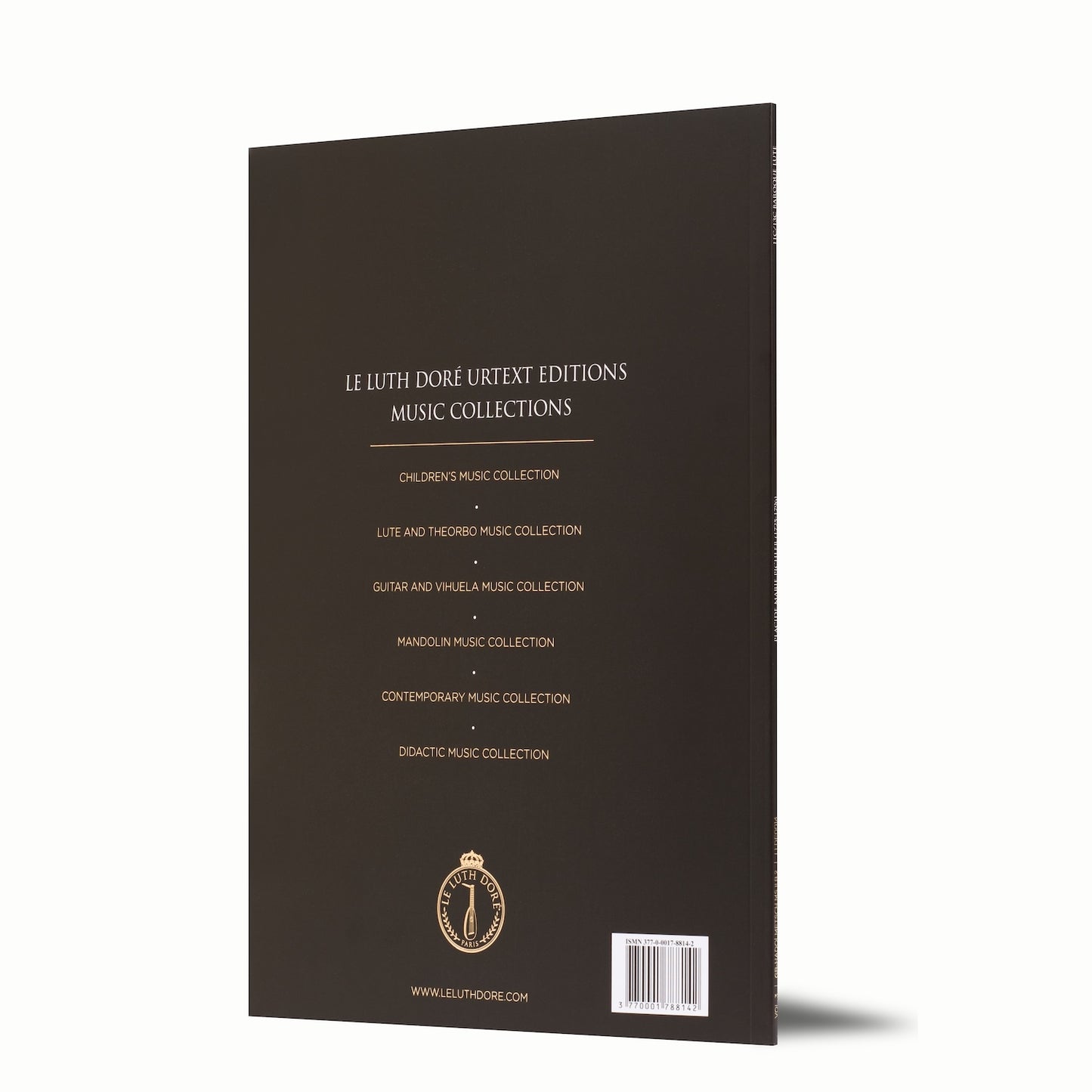

Falckenhagen and the galant legacy of the Baroque lute
Six sonatas in the galant style, published in 1736, in which the Baroque lute reveals its expressive richness—between lyricism, counterpoint, and formal clarity.
Edition prepared by Markus Lutz († 2023) and Richard Civiol, specialists in the German Baroque lute repertoire.
Product Details
Overview
Sonate di Liuto Solo, Opera Prima & Adam Falckenhagen
Published in 1736, Sonate di Liuto Solo, Opera Prima is a work consisting of six sonatas, each with three movements beginning with a slow Largo. Featuring a galant style and short yet elegant melodic phrases, the work sometimes incorporates fugal elements, notably in Sonata IV, evoking the late Baroque.
Adam Falckenhagen (1697–1754)
Adam Falckenhagen, one of the last great lutenists, skillfully combined high Baroque and galant style. Born near Leipzig, he studied lute with Johann Christian Weiyrauch, worked in Weimar, and joined the court of Bayreuth in 1728. His works for Baroque lute, solo or with ensemble, testify to his musical genius. He passed away in Bayreuth in 1754.
Editors
Markus Lutz († 2023) – Theologian, Lutenist
A self-taught musician, Markus Lutz developed a passion for Silvius Leopold Weiss’s music and the 18th-century lute repertoire, especially Austrian and German. From 2000 onward, he conducted research on Weiss and managed a dedicated website. In collaboration with Peter Steur, he cataloged Baroque lute manuscripts and contributed to several facsimile editions for the Deutsche Lautengesellschaft. He also prepared editions for Le Luth Doré Urtext. A lecturer and researcher, he regularly published on the Baroque lute. Pastor in Bad Buchau, he also played Renaissance lute since 2015.
Richard Civiol – Lutenist
A musician and copyist, Richard Civiol has explored the lute and theorbo repertoire for several decades. Holder of a First Prize in musical composition, he performs both Renaissance and Baroque music and practices basso continuo. Member of L’Oiselière and Les Musiciens de Mademoiselle De Guise, he performs in France and abroad. He collaborates with various ensembles, orchestras, and choirs and works on the reconstruction of ancient manuscripts.
Urtext Editions
Le Luth Doré Urtext Editions
Le Luth Doré Urtext Editions offer scores faithful to historical sources, optimized for musicians and musicologists. Our editions combine careful engraving, practical layout, durable materials, and a detailed critical apparatus in multiple languages.
Each text is rigorously established note by note to ensure an authentic restitution of the works, including original fingerings and ornamentations, as well as relevant stylistic suggestions.
Prepared by experts, our editions provide clear readability and informed interpretation of the early music repertoire.
We dedicate Le Luth Doré Urtext Editions to the memory of William H. Roberts († 2024), cofounder and source of inspiration for this collection. Without his vision and unwavering support, these editions would never have come into being.
Technical Details
• Editor(s): Markus Lutz & Richard Civiol
• Musical period: Baroque
• Instrument(s): 13c Baroque lute
• Instrumentation: Solo Baroque lute
• Notation: French tablature
• Modern edition: Urtext
• Publisher: Le Luth Doré Urtext Editions
• Year of publication: 2015
• Series: Lute and Theorbo Music Collection
• Pages: 64 pp.
• Dimensions: 230 × 310 mm
• Weight: 0.320 kg
• Binding: Sewn perfect binding
• Cover: Soft cover with flaps, anti-scratch lamination, gold stamping, and spot varnish
• ISMN: 377-0-0017-8809-8
Table of Contents
Sonata I (C minor): Largo, Allegro un poco, A tempo giusto
Sonata II (E flat major): Largo, Allegro un poco, Vivace
Sonata III (B flat major): Long, Moderate, Lively
Sonata IV (G minor): Largo, Allegro un poco, A tempo giusto
Sonata V (F Major): Long, Allegro, Vivace
Sonata VI (D minor): Largo, Allegro un poco, A tempo giusto
Press Reviews
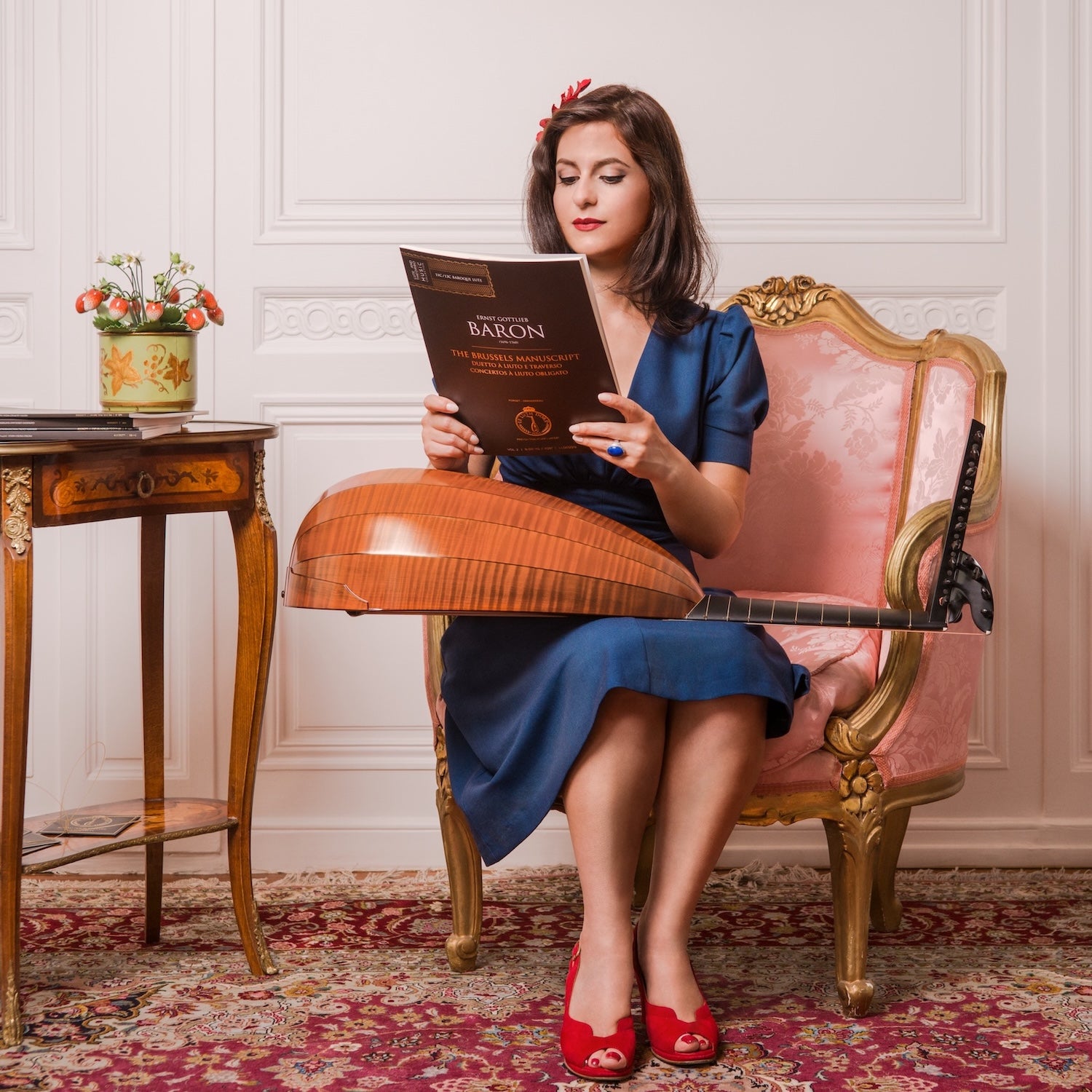
Editions for Baroque Lute
Each volume is crafted as a work of editorial art: high-quality printing, notation faithful to original sources, dual tablature (French and Italian), and rigorous critical apparatus.
Designed for today’s lutenists, these urtext editions embody the precision and elegance inherent to the art of the lute.


